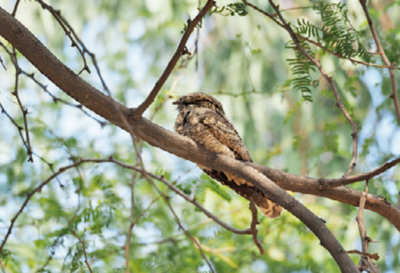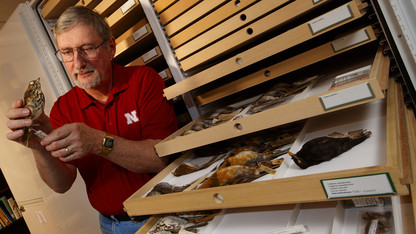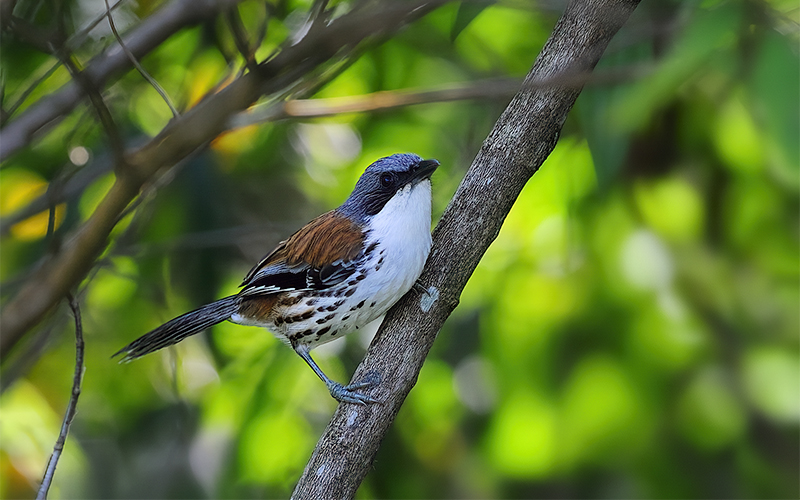
New bird species discovered in China
A New Bird Species Discovered in Central China
Exciting news for bird lovers and conservationists alike! A new bird species has been discovered in central China by an international team of scientists. The Sichuan bush warbler, Locustella chengi, has been identified as a new species to science after nearly two decades of searching and extensive analysis.
This shy brown bird was first noticed in May 1992 when two members of the research team heard its distinctive song and thought it might be something new. However, it took almost 20 years for the team to locate the bird again and conduct thorough analysis. The Sichuan bush warbler breeds in the mountainous region of the Sichuan Basin at elevations ranging from 1000-2300 meters, but its winter home is currently unknown.
The discovery of the Sichuan bush warbler highlights the importance of long-term research and the need for continued efforts to study and protect our planet’s biodiversity. The team’s extensive analyses of the bird’s DNA, physical measurements, plumage color, and vocalizations have confirmed that it is indeed a new bird species.
The identification of a new species is a rare and exciting event in the scientific community, and it provides an opportunity for further study of this unique bird. The discovery also underscores the critical role of research in identifying and conserving species in the face of increasing environmental challenges.
The Sichuan bush warbler’s discovery is a testament to the value of international collaboration in scientific research. The team involved in this discovery comprised researchers from China, Sweden, and the United States. This collaboration and the resulting discovery demonstrate the importance of global cooperation in understanding and preserving our planet’s biodiversity.
In conclusion, the discovery of the Sichuan bush warbler is a significant scientific achievement that underscores the importance of long-term research and international collaboration. This new bird species adds to the rich biodiversity of our planet, and its discovery provides an opportunity for further study and conservation efforts.
Newly Discovered Bird Species: Map of Locustrella mandelli complex
As we continue to learn more about the biodiversity of our planet, scientists are using cutting-edge technologies to discover new species. In the case of the Sichuan bush warbler, Locustella chengi, extensive analysis of DNA, physical measurements, plumage color, and vocalizations confirmed its identity as a new species to science. A map of the locations where sound recordings were made and DNA samples were collected from members of the Locustrella mandelli complex was published as Figure 1 in the scientific paper.
The map shows the locations where the research team collected data on various members of the Locustrella mandelli complex, including the newly discovered Locustella chengi. The red dots on the map represent the locations where sound recordings were made or DNA samples were collected from this new bird species. The map also shows locations where data was collected on other species within the complex.
This map is an essential tool for understanding the distribution and genetic diversity of the Locustrella mandelli complex. It provides valuable information for future research on this group of birds and will be a valuable resource for conservation efforts.
Furthermore, the map highlights the importance of fieldwork and collecting data from the natural environment. Without such data, it would be impossible to discover and study new species like the Sichuan bush warbler. The fieldwork required to collect this data can be difficult and time-consuming, but it is a critical part of scientific research.
In conclusion, the map of the Locustrella mandelli complex provides valuable information for researchers studying the distribution and genetic diversity of this group of birds. The inclusion of the newly discovered Sichuan bush warbler on the map underscores the importance of scientific research and fieldwork in discovering and understanding the biodiversity of our planet.
In May 1992, Professor Per Alström, who specializes in systematics and evolution at the Swedish University of Agricultural Sciences, and his colleague Professor Urban Olsson, an associate professor of systematics and biodiversity at the University of Gothenburg, visited the sacred Emei mountain in Sichuan province, central China, where they first heard the distinctive song of the newly discovered bird species. Professor Olsson was among the co-authors who contributed to the scientific paper on this species.
According to Professor Alström, they heard an unfamiliar song emanating from a dense patch of tall herbs near the trail while on a visit to the sacred Emei mountain in Sichuan province, central China. The song was unlike any bird sound they had heard before, and since they could not see any bird, they debated for a while whether it was an insect or a bird.

During their visit to the sacred Emei mountain in Sichuan province, central China in May 1992, Professor Per Alström and his colleague, Professor Urban Olsson, heard an unfamiliar sound that they suspected might be a bird. Professor Alström recalls that the sound was coming from a dense patch of tall herbs close to the trail and that the song was unlike any bird they had heard before.
After nearly two decades of searching, the researchers were able to locate the bird again and carry out extensive analyses of its DNA, physical measurements, plumage color, and vocalizations. The results of these analyses confirmed that the bird they had heard in 1992 was indeed a new species to science, which they named the Sichuan bush warbler, Locustella chengi.
Despite their initial uncertainty, the researchers’ suspicions that the sound they had heard was most likely a bird turned out to be correct. This highlights the importance of keeping an open mind when exploring new environments and encountering unfamiliar sounds or sights. In this case, the researchers’ curiosity and persistence led to the discovery of a new bird species, providing valuable insights into the biodiversity of the region.
The discovery of the Sichuan bush warbler is a reminder that there is still much to learn about the natural world, and that new discoveries can be made even in well-explored areas. It is also a testament to the power of scientific curiosity and the importance of careful observation and analysis in uncovering new knowledge.
In conclusion, the researchers’ suspicions that the sound they heard on their visit to the Emei mountain in 1992 was most likely a bird turned out to be correct, and their persistence in searching for the bird led to the discovery of a new species. This discovery highlights the importance of curiosity, observation, and careful analysis in advancing our understanding of the natural world.
Fig. 2 shows the sound that Professor Per Alström and Professor Urban Olsson heard on a particular morning in May 1992 during their visit to the sacred Emei mountain in Sichuan province, central China. The sound was a series of repeated phrases that included a prolonged, grating note followed by a shorter one.
Before loading any content from xeno-canto.org, we seek your consent as the provider may use cookies and other technologies. Click ‘Allow and continue’ to view the content included in this article.
After some time, Professor Per Alström and Professor Urban Olsson were able to catch glimpses of a small, round-bodied bird with a chocolate-brown color, a dark stubby tail, long pink legs, large dark eyes, and a pointy black beak, scurrying through the thick undergrowth. Upon careful observation, they determined that this bird was the source of the unfamiliar song they had heard earlier. They also noticed that the bird resembled the russet bush warbler, Locustella mandelli, which they had previously encountered in northwest Thailand.

The photograph was taken by Per Alström in May 2014 at Laojun Shan in Sichuan, China. It depicts a russet bush warbler, Locustella mandelli. (doi:10.1186/s40657-015-0016-z)
However, the bird’s song was so peculiar that they were unsure if it was truly a russet bush warbler. Despite their doubts, they were unable to confirm its identity as they did not encounter the elusive bird again during their visit.
After encountering the mysterious little chocolate-brown bird in the mountains of China, the two friends returned to Sweden where they continued to reflect on their experience. Despite their busy lives which included finding employment at separate universities, moving a few times, and focusing on their families, they never forgot about the bird that had left such a lasting impression on them.
How did the research team realise this bird is a new species?

Almost two decades after his first encounter with the mysterious bird, Professor Alström went back to China as a visiting professor at the Chinese Academy of Sciences, with the same determination to find and identify the bird. He discovered that some of his bird-watching colleagues in China had also come across the same bird. Together, they discussed and referred to the bird as the “Sichuan bush warbler,” which was the provisional name they had given it.
In May 2014, a research team comprising of several professors and students set out on an expedition into the forest of Laojun shan in Sichuan province, China, in search of a new bird species. The team consisted of Professor Pamela Rasmussen from Michigan State University, Professor Bo Dai from Leshan Normal University, and student researchers Min Zhao from the Chinese Academy of Sciences and Jian Zhao from Sun Yat-sen University.
During the expedition, the team encountered a variety of bird species, and their binoculars were always at the ready. They walked through dense forests and fields, carefully listening and watching for any signs of a new bird species. Their goal was to identify a bird species that had been heard but not seen during previous expeditions.
The team was particularly interested in locating a bird that had been provisionally named the “Sichuan bush warbler” by Professor Alström and his colleagues during an earlier expedition. The team was eager to identify and document this elusive bird.
After several days of searching, the team finally identified the bird they were looking for. It was a small, brown-colored bird with a unique song. The team was able to observe and document the bird’s physical characteristics, including its pink legs, dark eyes, and pointy black beak.
The discovery of this new bird species was an exciting moment for the research team. Their efforts had paid off, and they had added a new species to the world’s knowledge of avian life. Their findings were published in a scientific paper, and the bird was officially named Locustella chengi sp. nov.
This discovery is a testament to the importance of scientific exploration and the role it plays in expanding our knowledge of the world around us. It also highlights the value of collaboration between researchers from different institutions and countries in advancing scientific discovery.
A team was put together to investigate the interaction between the “Sichuan bush warbler” and the russet bush warbler after it was discovered that both species were breeding in the Qinling mountains. The team consisted of Fumin Lei, Gang Song, and Zuohua Yin from the Institute of Zoology at the Chinese Academy of Sciences in Beijing, Xuebin Gao from the Shaanxi Institute of Zoology in Xian, and Professor Alström with his Chinese colleagues. They embarked on an expedition to the Qinling mountains and collected the first specimen of the “Sichuan bush warbler” on 28 May 2011, which is now the holotype for the species. The holotype, which is the specimen that represents the characteristics of the species, including sound recordings and DNA samples, is now preserved in the Institute of Zoology at Chinese Academy of Sciences.
Subsequently, additional individuals were observed, captured, and their measurements taken, their songs recorded, and DNA samples collected.

In the laboratory, mitochondrial DNA analyses were conducted on samples taken from birds belonging to the Locustella genus. The results of these analyses indicated that the russet bush warbler and the newly discovered Sichuan bush warbler are closely related. Furthermore, the analyses suggested that these two species diverged from a common ancestor approximately 850,000 years ago, as shown in figure 3.
The study of bird species often involves the use of genetic analysis to understand their evolution and relationships with other species. A recent study on the Sichuan bush warbler and russet bush warbler examined the genetic relationship between these two species.
Figure 3 in the study presents a chronogram of cytochrome b for individual specimens of both species. The gray box represents the Sichuan bush warbler, while the yellow box represents the russet bush warbler. The blue bars on the chronogram are 95% highest posterior density distributions for node height, which provide information about the time when the species diverged from a common ancestor.
According to the analysis, the two bush warblers are closely related and diverged from a common ancestor around 850,000 years ago. This information helps to shed light on the evolutionary history of these two species and their relationships with other bird species.
The study also provides important insights into the biology and behavior of these elusive birds. By capturing and measuring individuals, recording their songs, and collecting DNA samples, the research team was able to learn more about these birds and their interactions with each other. The holotype for the Sichuan bush warbler, which is the one specimen that represents what the species looks like, is now housed in the Institute of Zoology at Chinese Academy of Sciences, along with sound recordings and a sample of its DNA.
Overall, the study of the Sichuan bush warbler and russet bush warbler provides valuable information about these bird species and their evolutionary history. The genetic analysis and other techniques used in the study can be applied to other bird species, helping researchers to better understand the diversity of life on Earth.
The team conducted measurements of various physical features such as plumage coloration, beak length, height and width, as well as wing and leg length on each bird.
With digital calipers in hand, Per Alström and bush warbler specialist Pam Rasmussen (an assistant professor of zoology at Michigan State University) can be seen measuring one specimen of the newly discovered species. In the background stands a third co-author, Bo Dai of Leshan Normal University. The photo was taken in May 2014 at Laojun Shan in Sichuan province, China and was captured by Jian Zhao with permission from Per Alström.
The measurements carried out by the team provided confirmation that the two species were distinct from each other. For instance, in terms of breeding plumage, the Sichuan bush warbler had a generally more greyish appearance compared to the russet bush warbler, which was characterized by its distinctly russet coloration. Furthermore, it was determined that the Sichuan bush warbler had shorter tails and longer wings compared to the russet bush warbler.



